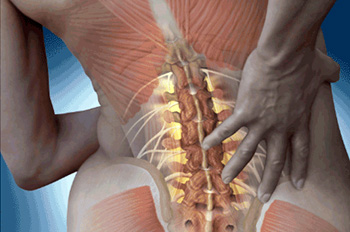 Lumbar disc herniation is also known as a slipped, ruptured, or prolapsed disc. Whatever name is given, it all refers to the medical condition when the soft material found in the middle of the lumbar disc experiences so much pressure that it ruptures. When this occurs, pressure can build up against one or more of the nerves found in the spine. This can result in symptoms such as pain or numbness in the lower back.
Lumbar disc herniation is also known as a slipped, ruptured, or prolapsed disc. Whatever name is given, it all refers to the medical condition when the soft material found in the middle of the lumbar disc experiences so much pressure that it ruptures. When this occurs, pressure can build up against one or more of the nerves found in the spine. This can result in symptoms such as pain or numbness in the lower back.
The condition of lumbar disc herniation can happen to anyone. However, this particular condition is more common among the elderly. The reason for this is that as people age, the lumbar discs may dry out and compress. The hard outside areas of the disc may then deteriorate and show signs of distress. When this occurs, nothing walls in the nucleus or the inside of the ring.
The result is that it tends to bulge out. As the spine goes through more stress, the nucleus eventually collapses and pieces of the disc material press against the nerve endings found behind the disc space. Because of the natural movements of people, most of the damage in a lumbar disk herniation occurs in the lower back region, particularly in the L4-5 and L5-S1 areas.
Category of Cervical Disc Herniation in TCM
Spinal cervical intervertebral disc herniation
Nerve root cervical intervertebral disc herniation
Sympathetic cervical intervertebral disc herniation
Vertebral artery cervical intervertebral disc herniation